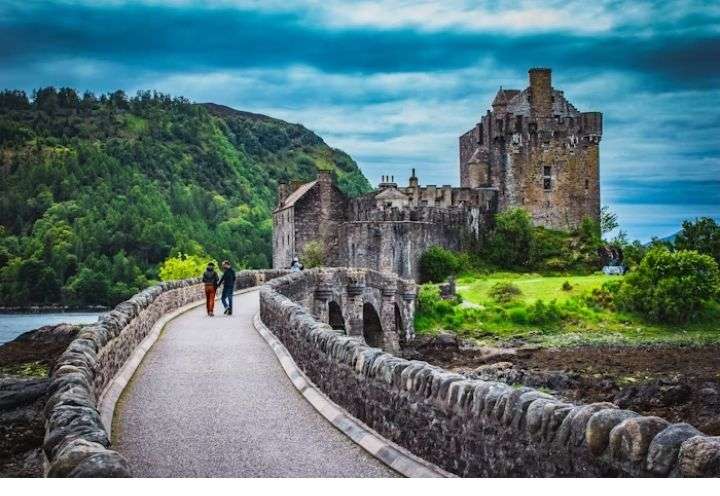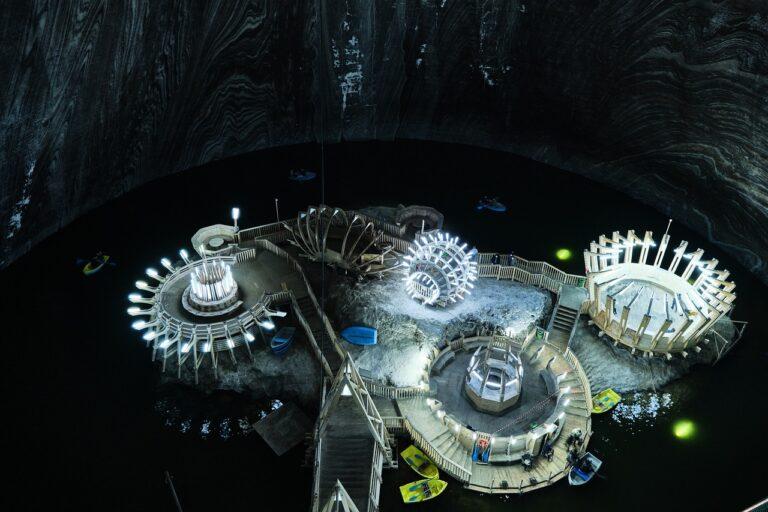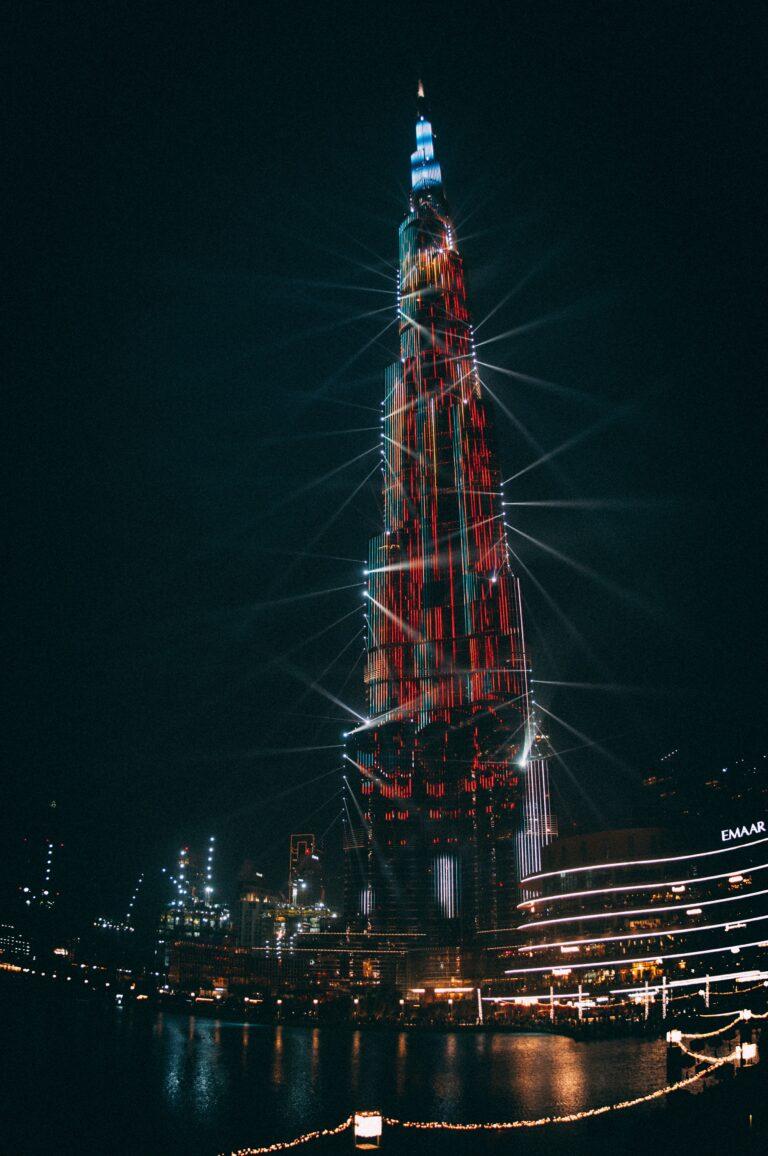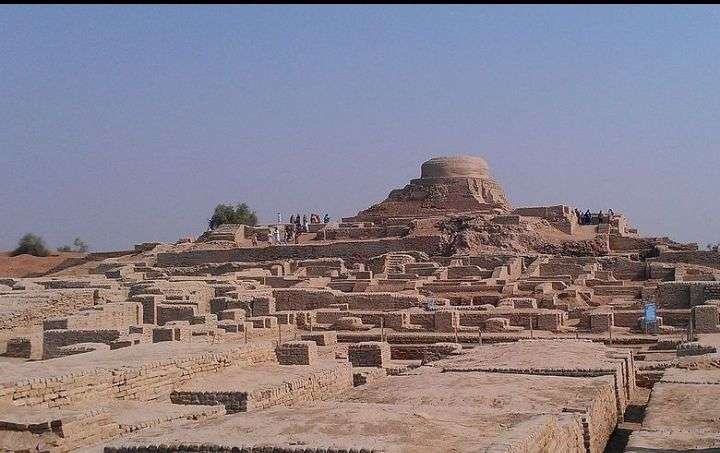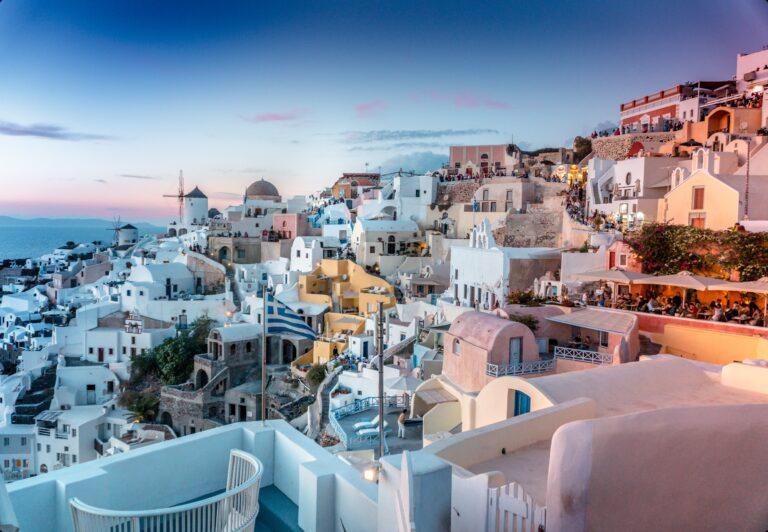India, officially the Republic of India, is a country in South Asia. It ranks seventh globally in terms of landmass, second in population, and holds the distinction of being the world’s largest democratic nation. Bounded by the Indian Ocean, the Arabian Sea, and the Bay of Bengal, it shares land borders with Pakistan, China, Nepal, Bhutan, Myanmar, and Bangladesh.
https://youtu.be/0RCIZ8UE21A?si=lmqw61dsjaDUibAi
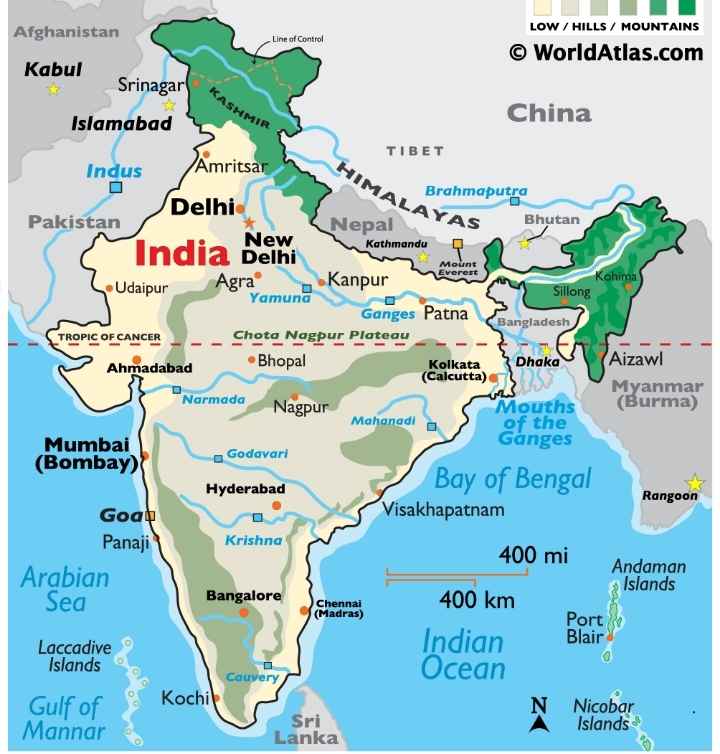
India’s distinguished terrain ranges from snow-capped mountains to sunwashed beaches, and it is home to a multitude of sacred sites and time-honored rituals, reflecting its long, colorful, and sometimes tumultuous history. The country is also known for its rich cultural heritage, including the surreal ruins of Hampi, the iconic Taj Mahal, and the scenic backwaters of Kerala. With a vibrant mix of landscapes and a thriving creative ecosystem, India offers a captivating and unforgettable experience for visitors and creators alike.
Contents
- 1 Falg of india
- 2 History of india
- 3 Historical places in mumbai
- 4 Historical Places in Delhi
- 5 Historicle places in shimla India
- 6 historical places in goa
- 7 Historical places in uter perdaish agra
- 8 Historicle places in rajistan
- 9 historical places in Chennai:
- 10 Historical places in Punjab
- 11 Frequently Asked Questions about Visiting Historical Places in India
Falg of india
The distinctive national flag of India features a horizontal tricolor arrangement with deep saffron atop, followed by a white stripe in the middle, and dark green at the bottom, all in equal proportion.

In the center of the white band is a navy blue wheel, which represents the Dharma Chakra. The top saffron color indicates the strength and courage of the country, the white middle band indicates peace and truth with the Dharma Chakra, and the green color shows the fertility, growth, and auspiciousness of the land.
The flag was adopted in its present form during the meeting of the Constituent Assembly on July 22, 1947, a few days before India’s independence from British rule.
The design of the flag was adopted by the Constituent Assembly of India and it is a symbol of the hopes and aspirations of the people of India.
The flag code of India, 2002, contains rules and regulations for the display of the national flag.
History of india
The history of India is vast and encompasses ancient civilizations, empires, and colonial periods. The Indian subcontinent is home to one of the world’s oldest and most influential civilizations. Here is a brief overview of the history of India:
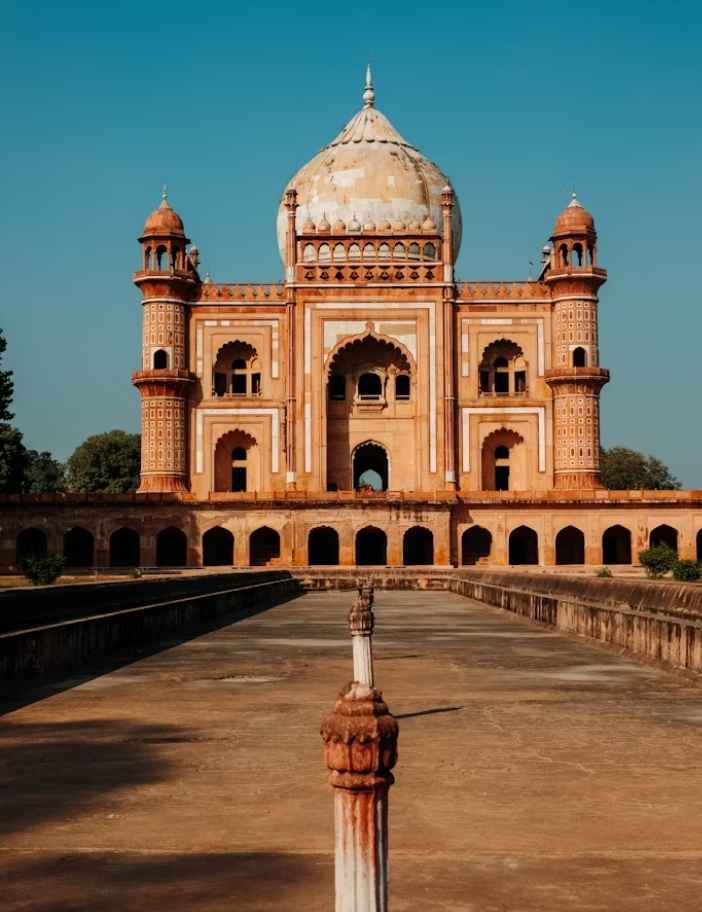
Ancient India
Human remains discovered in South Asia have been dated back to 30,000 years ago, marking the earliest known evidence of human presence in the region.
Mauryan and Gupta Empires
The Mauryan Empire, founded in the 3rd century BCE, witnessed a period of social cohesion and religious change during Ashoka’s reign.
The Gupta Empire, spanning from the 4th to the 6th century CE, is often hailed as the pinnacle of Hinduism’s “Golden Age.”
Medieval India
The period saw the advent of powerful Hindu states, the emergence of Sikhism, and the conquest of most of the Indian subcontinent by the Mughal Empire in the 16th century.
British India
From the mid-18th to the mid-19th century, large regions of India were gradually annexed by the East India Company, leading to the Indian Rebellion of 1857.
India was ruled directly by the British Crown, in the British Raj, until it gained independence in 1947.
Modern India
After independence, India became a republic in 1950 and has since seen significant political, social, and economic developments.
Historical places in mumbai
Mumbai, the capital city of the Indian state of Maharashtra, is replete with a rich tapestry of history and heritage, boasting a myriad of historical landmarks that offer a glimpse into its storied past.
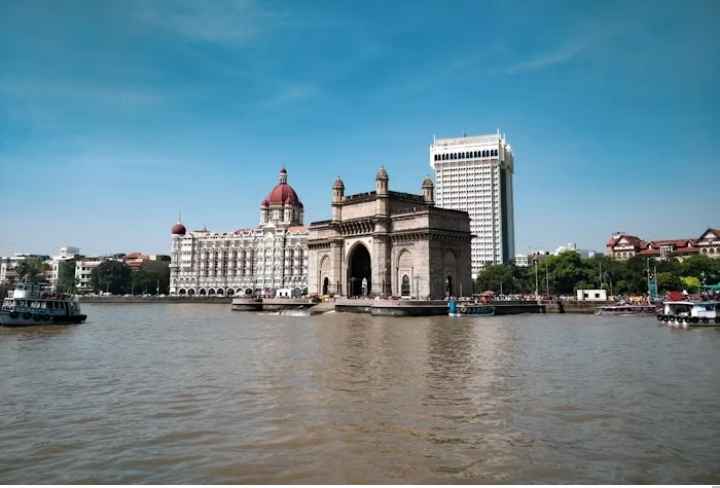
Gateway of India
The Gateway of India stands as an iconic monument, built in 1924 to commemorate the visit of King George V and Queen Mary to India. This colossal structure, overlooking the Arabian Sea, serves as a symbol of the city’s grandeur and historical significance.
Taj Mahal Palace
The Taj Mahal Palace is not only India’s first 5-star hotel but also a testament to opulence and grandeur. Its history is intertwined with the city’s, having withstood the test of time and witnessed key historical events.
Elephanta Caves
A short ferry ride from Mumbai takes visitors to the Elephanta Caves, a UNESCO World Heritage Site. These caves are an exemplar of rock-cut art and architecture from medieval India, featuring intricately carved sculptures and reliefs.
Kanheri Caves
The Kanheri Caves and Mahakali Caves are ancient cave complexes that date back to the 2nd century. These caves, located in the lush greenery of the Sanjay Gandhi National Park, offer a fascinating glimpse into the region’s ancient Buddhist culture and art.
Haji Ali Dargah
The Haji Ali Dargah is a centuries-old mosque and tomb of a Muslim saint, constructed in 1431. This architectural marvel is a splendid example of Indo-Islamic and Mughal influences, and it holds immense religious and historical significance.
Rajabai Clock Tower
The Rajabai Clock Tower is a fine example of Gothic and French architectural styles. Standing tall within the University of Mumbai, this historic clock tower is a testament to the city’s colonial heritage and architectural prowess.
Chhatrapati Shivaji Maharaj Terminus
The Chhatrapati Shivaji Maharaj Terminus is a historic railway station that was declared a UNESCO World Heritage Site in 2004. This architectural gem, with its blend of Victorian Gothic and traditional Indian Mughal styles, is a living testament to Mumbai’s rich history and cultural heritage.
Historical Places in Delhi
Delhi, the capital city of India, is steeped in history and boasts a plethora of historical landmarks that offer a fascinating glimpse into its rich and diverse heritage.
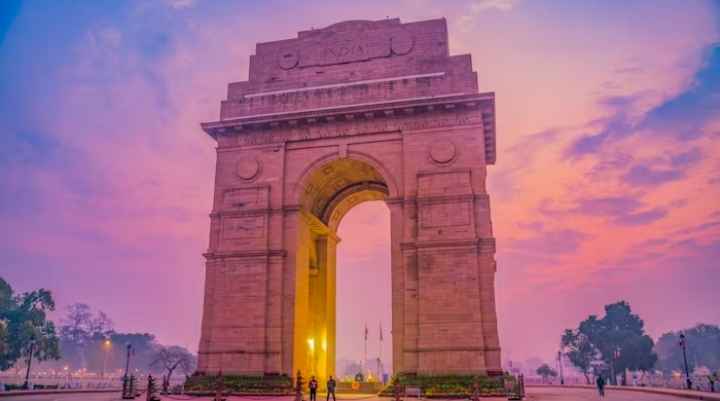
Red Fort
The Red Fort, also known as Lal Qila, is a magnificent fortress-palace built by the Mughal Emperor Shah Jahan in 1639. Constructed using red sandstone, it served as the residence of Mughal emperors. Today, it stands as a UNESCO World Heritage Site and a symbol of India’s rich cultural legacy
Qutub Minar
The Qutub Minar is a soaring 73-meter-high minaret, built in the 12th century. It is a UNESCO World Heritage Site and a remarkable example of Indo-Islamic architecture. The complex also houses ancient ruins, making it a must-visit for history enthusiasts
Humayun’s Tomb
Humayun’s Tomb is a UNESCO World Heritage Site and a splendid example of Mughal architecture. Built in the 16th century, it is the tomb of the Mughal Emperor Humayun and is surrounded by beautiful gardens, making it a serene and historically significant site
Jama Masjid
The Jama Masjid is one of the largest and most renowned mosques in India. Built by Shah Jahan, it is an architectural marvel that reflects the grandeur of the Mughal era.
India Gate
The India Gate is a war memorial located in the heart of Delhi. Built in the memory of soldiers who lost their lives in World War I, it is an iconic historical landmark and a popular gathering spot for locals and tourists alike
Purana Qila
Purana Qila, or the Old Fort, is believed to date back to the Mahabharata era. This ancient fort, with its massive gates and impressive ramparts, showcases a blend of Mughal and Afghan architectural styles, offering a captivating journey through Delhi’s historical legacy
Jantar Mantar
The Jantar Mantar is an equinoctial sundial and observatory built in the 18th century. It houses 13 astronomy instruments and is a testament to the scientific and astronomical advancements of the time. This site is a must-visit for those interested in ancient astronomical practices.
Historicle places in shimla India
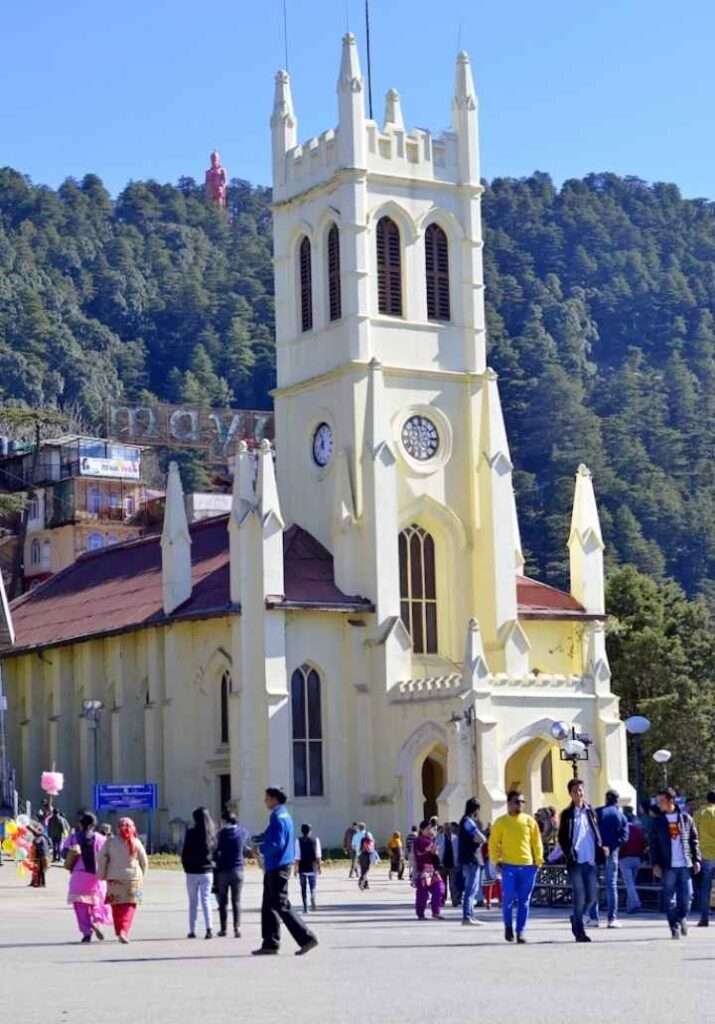
Viceregal Lodge (Rashtrapati Niwas):
This magnificent building served as the summer residence of the British viceroys during the colonial era. It is now the Indian Institute of Advanced Study and showcases colonial architecture.
Christ Church:
Built in 1857, this is one of the oldest churches in North India. It features beautiful stained-glass windows and colonial architecture, reflecting Shimla’s colonial past.
Jakhu Temple:
Dedicated to Lord Hanuman, this ancient temple is located atop Jakhu Hill and offers panoramic views of Shimla. It is believed to have been built during the times of Ramayana.
Scandal Point:
This famous location derives its name from a scandal involving the British viceroy’s daughter. It’s a popular spot for tourists and offers stunning views of the surrounding mountains.
The Ridge:
A spacious open space in the heart of Shimla, the Ridge is famous for its neo-gothic architecture, including Tudor-style buildings and Christ Church.
Kali Bari Temple:
Dedicated to Goddess Kali, this temple is situated near the Mall Road and is frequented by devotees and tourists alike.
State Museum (Himachal State Museum):
Located on Mall Road, this museum showcases the rich cultural heritage of Himachal Pradesh, including historical artifacts, sculptures, and paintings.
Gorton Castle:
Built in 1904, this castle served as the headquarters of the British government. It now houses various government offices and is an architectural marvel.
historical places in goa
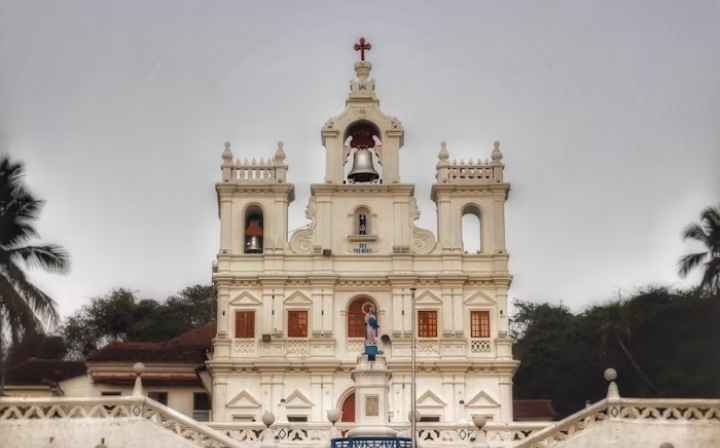
Basilica of Bom Jesus
The Basilica of Bom Jesus, located in Old Goa, is a UNESCO World Heritage Site and one of the most revered churches in India. Constructed in the 16th century, this Baroque-style church is famous for enshrining the mortal remains of St. Francis Xavier, a prominent Jesuit missionary. The elaborate architecture, stunning frescoes, and serene ambiance make it a must-visit site for history and architecture enthusiasts.
Aguada Fort:
Perched on a hill overlooking the Arabian Sea, Aguada Fort is a 17th-century Portuguese fortification in Goa. Built to defend against enemy invasions, the fort offers breathtaking views of the sea and surrounding landscape. Visitors can explore the well-preserved bastions, lighthouse, and underground water storage facilities within the fort premises.
Chapora Fort:
Situated atop a hill overlooking the Chapora River, Chapora Fort is another historic fort in Goa known for its strategic location and panoramic views. The fort has played a crucial role in the region’s history and offers visitors a glimpse into the past through its ancient architecture and scenic vistas.
Fontainhas:
Fontainhas, the Latin Quarter of Panaji, is a charming neighborhood known for its well-preserved Portuguese colonial architecture. The area is characterized by narrow winding streets, vibrant houses with colorful facades, and ornate balconies. Strolling through Fontainhas is like taking a step back in time to Goa’s colonial era.
Arvalem Caves:
The Arvalem Caves, dating back to the 6th century, are ancient rock-cut caves located in North Goa. These caves are known for their intricate carvings, sculptures, and historical significance, providing a glimpse into the region’s pre-colonial heritage. Visitors can marvel at the architectural details and explore the serene surroundings of these ancient caves.
Goa State Museum:
The Goa State Museum, situated in Panaji, is a treasure trove of artifacts showcasing the state’s rich cultural heritage. The museum houses a diverse collection of sculptures, coins, paintings, and other exhibits that offer insights into Goa’s history, art, and traditions. It serves as a valuable resource for those interested in delving deeper into the region’s past.
Historical places in uter perdaish agra
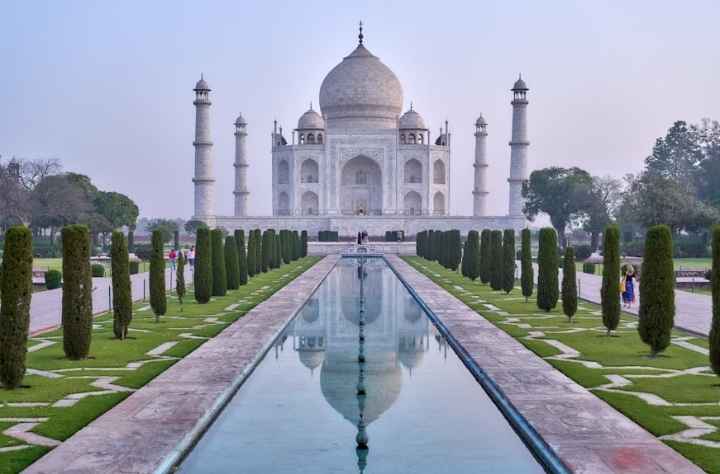
Taj Mahal:
The Taj Mahal, located in Agra, Uttar Pradesh, is one of the most iconic historical sites in India and a UNESCO World Heritage Site. Built by Mughal Emperor Shah Jahan in memory of his beloved wife Mumtaz Mahal, this magnificent white marble mausoleum is a masterpiece of Mughal architecture. The Taj Mahal’s intricate carvings, symmetrical layout, and picturesque gardens make it a symbol of eternal love and a must-visit destination for tourists worldwide.
Fatehpur Sikri:
Fatehpur Sikri, situated near Agra, is a well-preserved Mughal city built by Emperor Akbar in the 16th century. This UNESCO World Heritage Site served as the capital of the Mughal Empire for a short period before being abandoned. The city’s architectural marvels, including the Buland Darwaza, Jama Masjid, and Panch Mahal, showcase a blend of Persian, Indian, and Islamic influences, making it a significant historical and cultural site.
Varanasi Ghats:
Varanasi, also known as Kashi, is a sacred city in Uttar Pradesh renowned for its ghats along the Ganges River. The ghats, including Dashashwamedh Ghat, Manikarnika Ghat, and Assi Ghat, are steeped in history and spirituality, attracting pilgrims, tourists, and seekers from around the world. The ghats serve as venues for religious ceremonies, rituals, and cremations, offering visitors a glimpse into the timeless traditions and cultural heritage of Varanasi.
Agra Fort:
Agra Fort, a UNESCO World Heritage Site situated in Agra, is a historic fortification that served as the main residence of the Mughal emperors. Built by Emperor Akbar in the 16th century and later expanded by Shah Jahan, the fort features exquisite palaces, courtyards, and mosques showcasing Mughal architecture. The Diwan-i-Am, Diwan-i-Khas, and Khas Mahal are among the notable structures within the fort complex that highlight the grandeur of the Mughal era.
Allahabad Fort:
Allahabad Fort, located in Allahabad, Uttar Pradesh, is a historical fort built by Emperor Akbar in the 16th century at the confluence of the Ganges and Yamuna rivers. The fort’s strategic location and impressive architecture make it a significant landmark in Indian history. The fort houses the famous Akshaya Vat (immortal banyan tree) and the Patalpuri Temple, adding to its historical and cultural importance.
Historicle places in rajistan
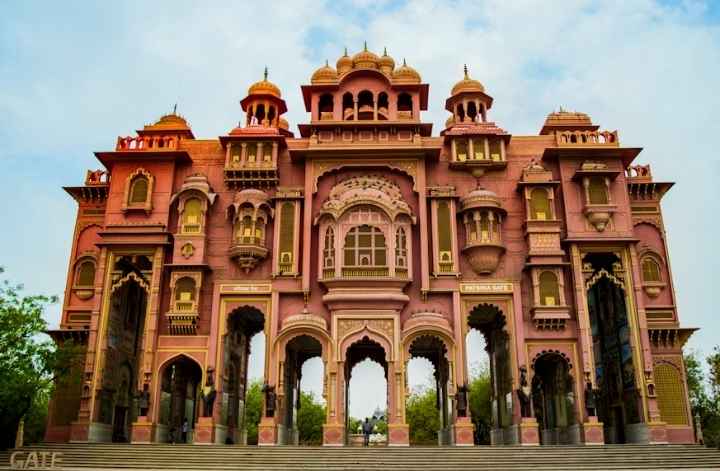
Amber Fort (Amer Fort):
Located in Jaipur, Rajasthan, the majestic Amber Fort is a UNESCO World Heritage Site known for its stunning blend of Rajput and Mughal architecture. Built in the 16th century by Raja Man Singh I, the fort stands as a symbol of Rajasthan’s rich history and grandeur. Visitors can explore the intricate carvings, intricate mirror work, and picturesque gardens within the fort complex, as well as enjoy an elephant ride up to the main entrance, making it a truly unforgettable experience.
Mehrangarh Fort:
Perched on a rocky hilltop overlooking Jodhpur, Mehrangarh Fort is one of the largest forts in India and a prominent historical landmark in Rajasthan. Built in the 15th century by Rao Jodha, the fort boasts impressive architecture, intricate latticework, and expansive courtyards. The fort museum houses a remarkable collection of artifacts, including royal palanquins, arms, and costumes, offering visitors a glimpse into the region’s regal past.
Jantar Mantar, Jaipur:
Jantar Mantar in Jaipur is a UNESCO World Heritage Site and a fascinating astronomical observatory built by Maharaja Jai Singh II in the 18th century. The site features a collection of architectural astronomical instruments designed for precision observations of celestial bodies. The largest sundial in the world, along with other unique instruments, showcases the advanced astronomical knowledge of the time.
City Palace, Udaipur:
The City Palace in Udaipur is a spectacular complex of palaces, courtyards, and gardens overlooking Lake Pichola. Built over centuries by various rulers of the Mewar dynasty, the palace showcases a harmonious blend of Rajput and Mughal architectural styles. Visitors can explore the opulent rooms, ornate balconies, and splendid courtyards, immersing themselves in the grandeur of Rajasthan’s royal heritage.
Hawa Mahal:
Hawa Mahal, or the “Palace of Winds,” is an iconic structure in Jaipur known for its intricate honeycomb-like facade with over 900 small windows (jharokhas). Built in 1799 by Maharaja Sawai Pratap Singh, the palace allowed royal women to observe street processions while remaining unseen. The five-story structure is a fine example of Rajput architectural elegance and is a must-visit for its historical significance and unique design.
historical places in Chennai:
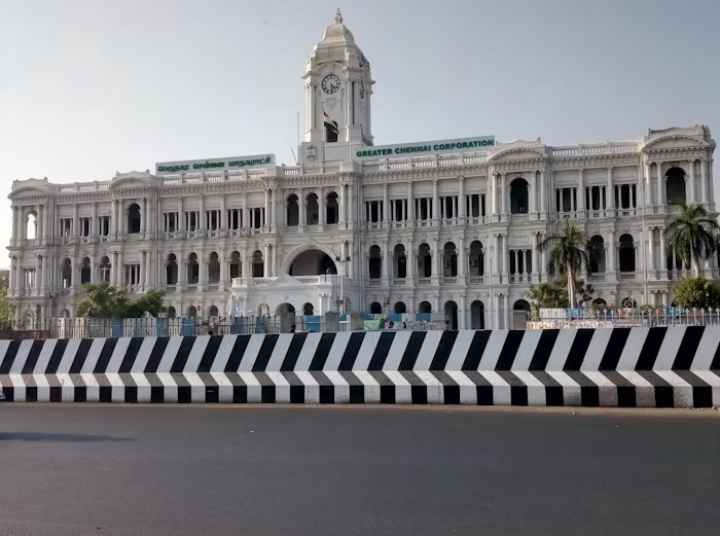
Fort St. George:
Fort St. George is a prominent historical landmark in Chennai, built by the British East India Company in 1644. It was the first English fortress in India and served as the nucleus around which the city of Madras (now Chennai) developed. The fort houses St. Mary’s Church, the oldest British building in India, and the Fort Museum, which displays colonial artifacts, arms, and uniforms.
San Thome Basilica:
San Thome Basilica is a revered religious site in Chennai, built over the tomb of St. Thomas the Apostle. The basilica’s neo-Gothic architecture and serene ambiance attract visitors and pilgrims alike. It stands as a testament to the city’s multicultural heritage and is an important pilgrimage site for Christians in India.
Kapaleeshwarar Temple:
The Kapaleeshwarar Temple is a historic Hindu temple dedicated to Lord Shiva and known for its Dravidian-style architecture. Located in the Mylapore neighborhood of Chennai, the temple’s intricate gopurams (gateway towers), colorful sculptures, and vibrant rituals reflect the rich cultural traditions of Tamil Nadu. The temple is a significant religious and architectural landmark in the city.
Government Museum:
The Government Museum in Chennai is one of the oldest museums in India, established in 1851. It houses a diverse collection of artifacts, including archaeological finds, numismatic exhibits, sculptures, and traditional South Indian art. The museum provides a comprehensive overview of Tamil Nadu’s history, art, and culture, making it a must-visit for history enthusiasts.
Vivekananda House (Ice House):
Vivekananda House, also known as the Ice House, is a historic building in Chennai where Swami Vivekananda stayed for a brief period in 1897. The house now serves as a museum dedicated to Swami Vivekananda and his teachings. Visitors can explore exhibitions, artifacts, and a meditation hall that provide insights into the life and philosophy of this revered spiritual leader.
Historical places in Punjab
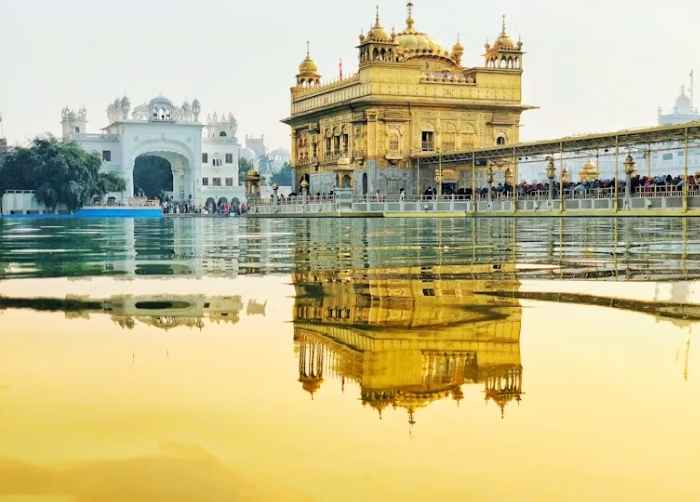
Golden Temple (Harmandir Sahib):
The Golden Temple, also known as Harmandir Sahib, is the holiest Gurdwara and a prominent historical site in Punjab, India. Located in Amritsar, this iconic Sikh shrine is famous for its stunning golden architecture, serene sarovar (holy pool), and spiritual significance. The temple was built in the 16th century by Guru Arjan Dev Ji, the fifth Sikh Guru. Visitors from around the world are drawn to the Golden Temple to experience its tranquil atmosphere, partake in the community kitchen (langar), and witness the mesmerizing nightly ceremony of the Palki Sahib.
Jallianwala Bagh:
Jallianwala Bagh in Amritsar is a somber historical site that commemorates the tragic massacre of hundreds of unarmed Indian civilians by British troops on April 13, 1919. The walled garden stands as a symbol of India’s struggle for independence and serves as a reminder of the sacrifices made during the freedom movement. The Martyrs’ Well and the bullet marks on the walls bear witness to the brutal events of that fateful day.
Qila Mubarak:
Qila Mubarak, located in Bathinda, is a historical fort with a rich legacy dating back to the 10th century. This ancient fort has been associated with various rulers, including the Kushanas, Guptas, Rajputs, Mughals, and Sikhs. Qila Mubarak features impressive architecture, including the Darbar Hall, the Sheesh Mahal (Hall of Mirrors), and the beautiful gardens within its premises. The fort offers visitors a glimpse into Punjab’s royal past and architectural heritage.
Maharaja Ranjit Singh Museum:
The Maharaja Ranjit Singh Museum in Amritsar is dedicated to the life and legacy of Maharaja Ranjit Singh, the legendary Sikh ruler known as the Lion of Punjab. Housed in the Ram Bagh Palace, the museum showcases a collection of artifacts, paintings, arms, and armor from the Sikh Empire era. Visitors can explore exhibits that highlight the history, culture, and military prowess of the Sikh empire under Maharaja Ranjit Singh’s rule.
Wagah Border:
Wagah Border, located near Amritsar, is a historical site known for the daily Beating Retreat ceremony conducted by the Indian Border Security Force and the Pakistan Rangers. This elaborate and patriotic ceremony marks the closing of the international border between India and Pakistan. Visitors can witness the synchronized drills, flag-lowering ceremony, and spirited performances that symbolize the unity and rivalry between the two nations.
Harike Wetland and Bird Sanctuary:
Harike Wetland, situated in the Tarn Taran district of Punjab, is a significant historical and ecological site. This man-made wetland dates back to the 1950s and serves as a haven for migratory birds, including endangered species. The sanctuary’s diverse ecosystem, comprising wetlands, marshes, and forests, provides a peaceful retreat for nature lovers and birdwatchers, offering a glimpse into Punjab’s natural heritage.
Sadda Pind:
Sadda Pind in Amritsar is a cultural heritage village that offers visitors a unique opportunity to immerse themselves in Punjab’s rich traditions and history. This recreated village showcases traditional Punjabi architecture, crafts, music, dance, and cuisine, allowing visitors to experience the vibrant culture of Punjab. From folk performances to interactive workshops, Sadda Pind provides a nostalgic journey into Punjab’s rural past.
Gobindgarh Fort:
Gobindgarh Fort, located in Amritsar, is a historic fortress that has witnessed centuries of Punjab’s tumultuous history. Originally built by Maharaja Ranjit Singh, the fort served as a strategic stronghold during the Sikh Empire era. Today, Gobindgarh Fort has been restored and transformed into a cultural and historical complex, featuring museums, galleries, sound and light shows, and exhibitions that narrate the region’s storied past.
Fateh Burj:
Fateh Burj, also known as the “Victory Tower,” is a historic monument in Punjab, situated in the town of Chappar Chiri. The tower commemorates the historic victory of the Sikhs over the Mughals in the Chappar Chiri battle of 1710. Standing tall at 328 feet, Fateh Burj symbolizes the resilience and triumph of the Sikh community and offers panoramic views of the surrounding countryside.
Frequently Asked Questions about Visiting Historical Places in India
- What are some must-visit historical places in India?
Some must-visit historical places in India include the Taj Mahal in Agra, Red Fort in Delhi, Amber Fort in Jaipur, Qutub Minar in Delhi, and Hampi in Karnataka, among many others. - How can I plan a historical tour of India?
Start by researching the historical sites you want to visit and create an itinerary based on their locations. Consider factors like transportation, accommodation, and the time needed at each site. It’s also helpful to hire a local guide for deeper insights. - Are there any UNESCO World Heritage Sites in India?
Yes, India boasts numerous UNESCO World Heritage Sites, including the Taj Mahal, Red Fort, Hampi, Ellora Caves, Khajuraho Group of Monuments, and the Mountain Railways of India, among others.
.

Safnaa has been working in the travel industry for over a decade, and her expertise and knowledge are reflected in the high-quality content and resources available on travelstutor.com. She is dedicated to providing travelers with accurate and up-to-date information on destinations, accommodations, transportation, and activities, ensuring that they have the best possible travel experience.

